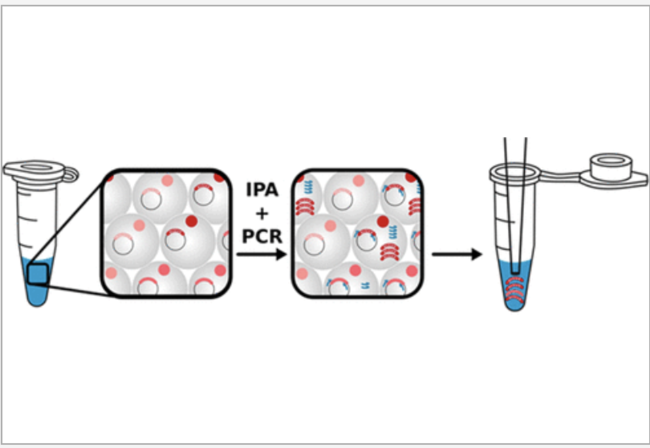 Directed evolution provides a powerful route for in vitro enzyme engineering. State-of-the-art techniques functionally screen up to millions of enzyme variants using high throughput microfluidic sorters, whose operation remains technically challenging. Alternatively, in vitro self-selection methods, analogous to in vivo complementation strategies, open the way to even higher throughputs, but have been demonstrated only for a few specific activities. Here, we leverage synthetic molecular networks to generalize in vitro compartmentalized self-selection processes. We introduce a programmable circuit architecture that can link an arbitrary target enzymatic activity to the replication of its encoding gene. Microencapsulation of a bacterial expression library with this autonomous selection circuit results in the single-step and screening-free enrichment of genetic sequences coding for programmed enzymatic phenotypes. We demonstrate the potential of this approach for the nicking enzyme Nt.BstNBI (NBI). We applied autonomous selection conditions to enrich for thermostability or catalytic efficiency, manipulating up to 107 microcompartments and 5 × 105 variants at once. Full gene reads of the libraries using nanopore sequencing revealed detailed mutational activity landscapes, suggesting a key role of electrostatic interactions with DNA in the enzyme’s turnover. The most beneficial mutations, identified after a single round of self-selection, provided variants with, respectively, 20 times and 3 °C increased activity and thermostability. Based on a modular molecular programming architecture, this approach does not require complex instrumentation and can be repurposed for other enzymes, including those that are not related to DNA chemistry.
Directed evolution provides a powerful route for in vitro enzyme engineering. State-of-the-art techniques functionally screen up to millions of enzyme variants using high throughput microfluidic sorters, whose operation remains technically challenging. Alternatively, in vitro self-selection methods, analogous to in vivo complementation strategies, open the way to even higher throughputs, but have been demonstrated only for a few specific activities. Here, we leverage synthetic molecular networks to generalize in vitro compartmentalized self-selection processes. We introduce a programmable circuit architecture that can link an arbitrary target enzymatic activity to the replication of its encoding gene. Microencapsulation of a bacterial expression library with this autonomous selection circuit results in the single-step and screening-free enrichment of genetic sequences coding for programmed enzymatic phenotypes. We demonstrate the potential of this approach for the nicking enzyme Nt.BstNBI (NBI). We applied autonomous selection conditions to enrich for thermostability or catalytic efficiency, manipulating up to 107 microcompartments and 5 × 105 variants at once. Full gene reads of the libraries using nanopore sequencing revealed detailed mutational activity landscapes, suggesting a key role of electrostatic interactions with DNA in the enzyme’s turnover. The most beneficial mutations, identified after a single round of self-selection, provided variants with, respectively, 20 times and 3 °C increased activity and thermostability. Based on a modular molecular programming architecture, this approach does not require complex instrumentation and can be repurposed for other enzymes, including those that are not related to DNA chemistry.
AMERICAN CHEMICAL SOCIETY
By: Adèle Dramé-Maigné, Rocío Espada, Giselle McCallum, Rémi Sieskind, Guillaume Gines, and Yannick Rondelez.
Publication Date: January 11, 2024
DOI: https://pubs.acs.org/doi/abs/10.102...

